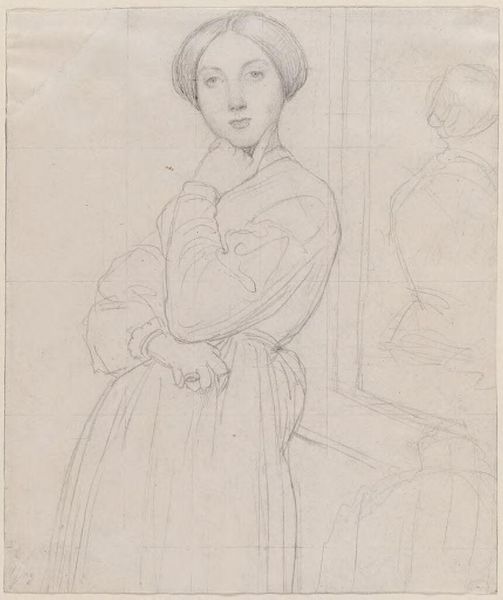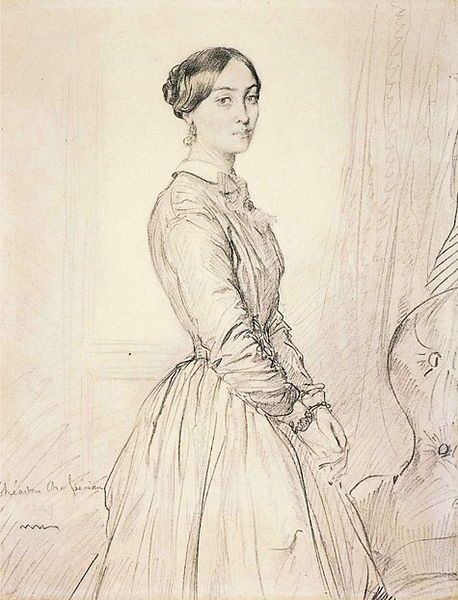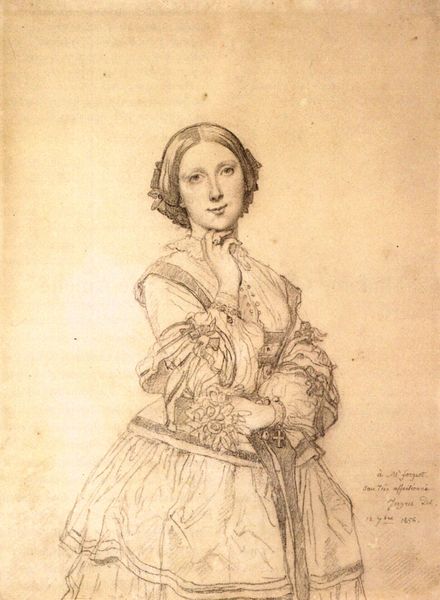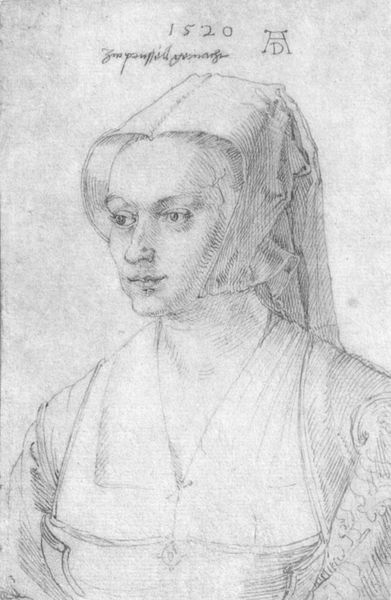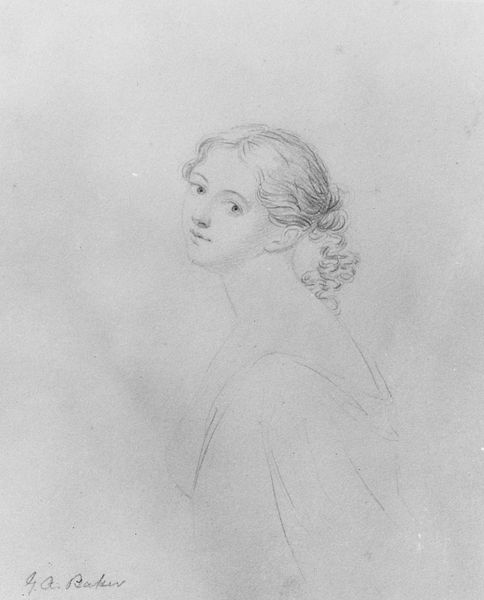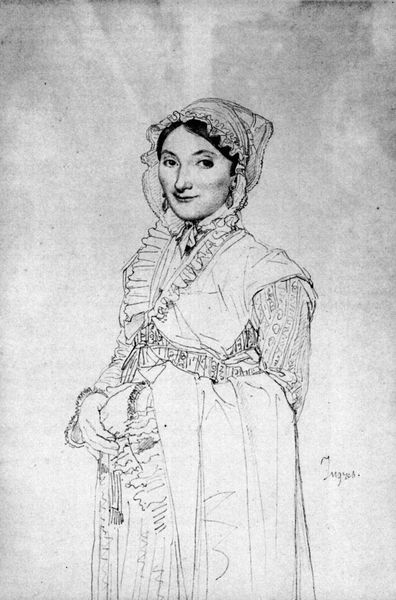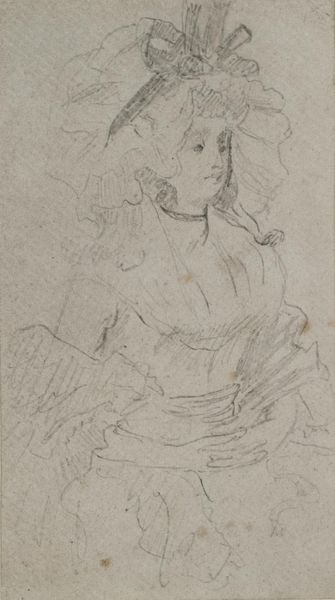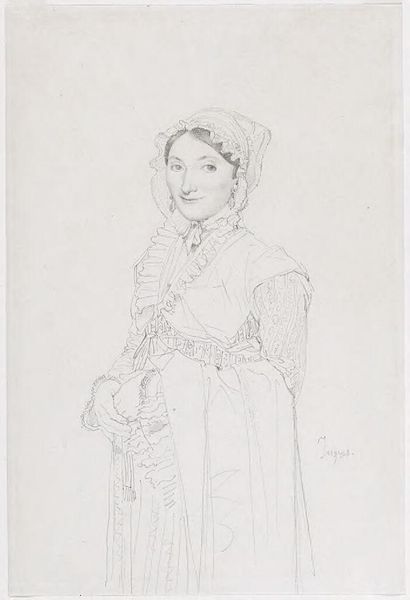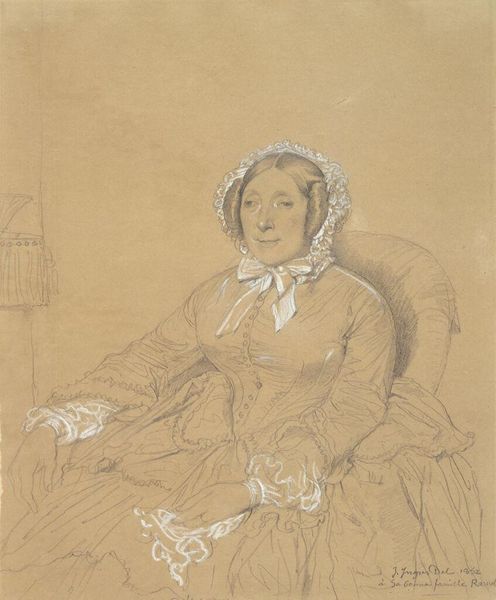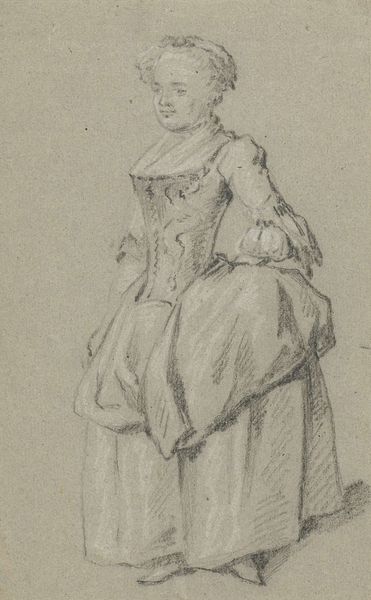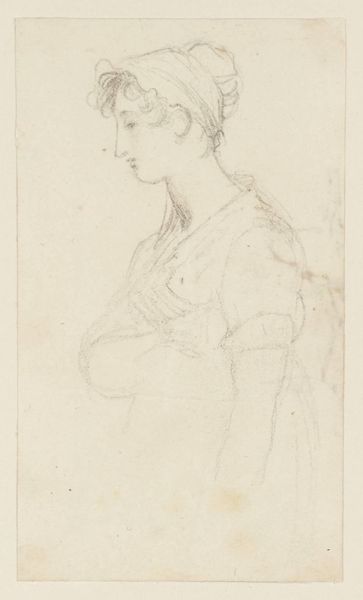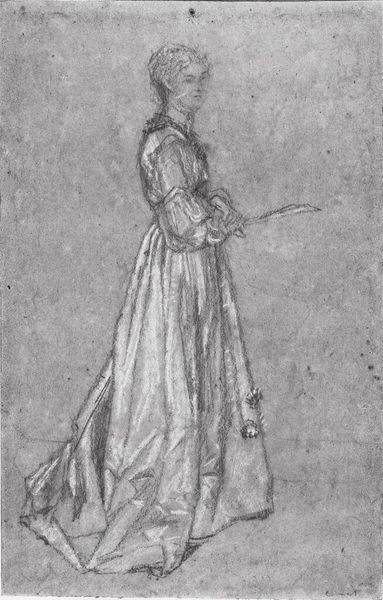
Study for Vicomtesse d'Hausonville, born Louise Albertine de Broglie I
0:00
0:00
jeanaugustedominiqueingres
Private Collection
drawing, pencil
#
portrait
#
drawing
#
self-portrait
#
pencil sketch
#
charcoal drawing
#
figuration
#
form
#
romanticism
#
pencil
#
line
#
portrait drawing
#
academic-art
#
realism
Copyright: Public domain
Editor: This is "Study for Vicomtesse d'Hausonville, born Louise Albertine de Broglie I," a pencil drawing by Jean-Auguste-Dominique Ingres. I find the subtle lines quite captivating. There's something very intimate and thoughtful about the way he captures the Vicomtesse. What story does this portrait sketch tell you? Curator: Ingres was deeply embedded in the art institutions of his time, championing academic art even as Romanticism and later Realism emerged. Consider how his meticulous approach served not just aesthetic ideals, but also the social function of portraiture within the elite. This drawing presents an interesting lens. Why do you think he chose to include the reflected sketch in the mirror? Editor: That's fascinating, I didn't really think of the social implications for portraiture back then. About the reflection - maybe to show the artistic process, or the multifaceted nature of the subject's identity? Curator: Exactly! Ingres isn’t simply presenting a likeness. The mirror and the reflected image introduce layers of complexity, inviting viewers to consider how identity is constructed and perceived – and how social standing and privilege play into this construction, it certainly gave status to the Hausonville family. He does offer hints of her status as a socialite within this composition. What effect do you think this "unfinished" quality would have had on the audience, before photography began to dominate how the powerful were imaged? Editor: That's a good point. Perhaps the visible process allowed for a more 'honest' depiction or impression, but this honesty would still appeal to that audience by appearing sophisticated. I didn't even realize it was supposed to be in a mirror! Curator: Precisely, that kind of self-awareness enhances one's understanding not only of Ingres, but also of the social and cultural environment that shaped both his art and the lives of his subjects. Editor: I am viewing this portrait so differently now – thinking about the social structures intertwined in its creation and reception! Curator: And that’s the beauty of art history. The more we examine it, the more it teaches us about ourselves.
Comments
No comments
Be the first to comment and join the conversation on the ultimate creative platform.
